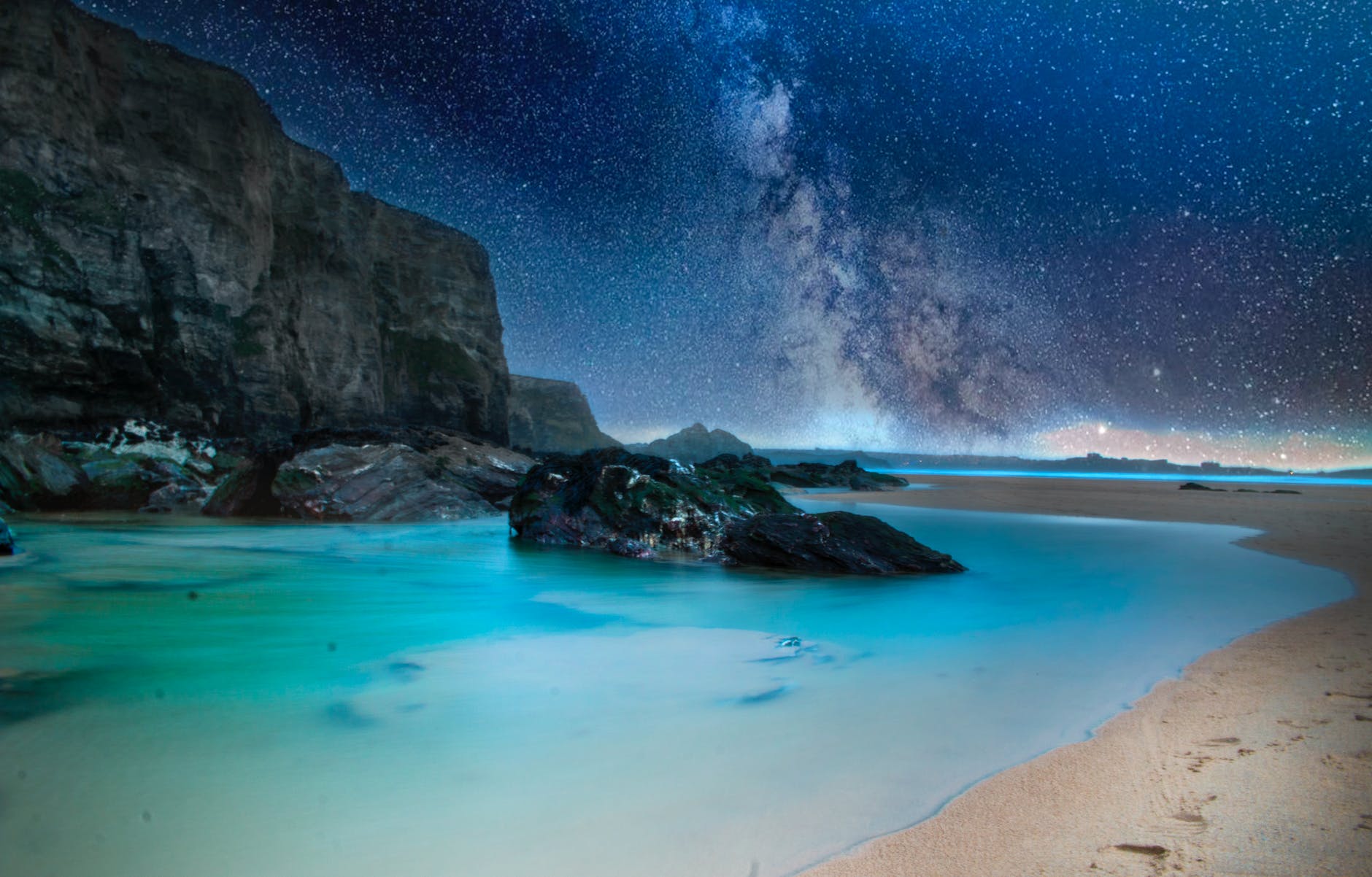Galaxies are some of the most beautiful and awe-inspiring objects in the universe. They are not only visually stunning but also hold important clues about the origins of our universe. In this article, we will explore the formation and evolution of galaxies, from the early universe to the present day.
The Beginning: The Big Bang
The universe began approximately 13.8 billion years ago with the Big Bang, a massive explosion that sent matter and energy flying in all directions. During the first few seconds after the Big Bang, the universe was incredibly hot and dense, with particles colliding and fusing to form the first atoms.
The First Galaxies
After the initial explosion, the universe continued to expand and cool, allowing the first galaxies to form. These galaxies were much smaller and less complex than the ones we see today, but they were the building blocks for the larger galaxies that we see in the universe today. An example of one of these early galaxies is the UDFy-38135539 galaxy. It is located approximately 13 billion light-years away from Earth and is estimated to have formed just 600 million years after the Big Bang. This galaxy is tiny compared to most galaxies we see today and contains only a few million stars.
The Birth of Stars
Within these early galaxies, stars began to form. Stars are born when clouds of gas and dust collapse under the force of gravity. As the gas and dust collapse, they heat up, and the pressure in the core of the cloud becomes so intense that nuclear fusion begins. This process releases energy in the form of light and heat, and a new star is born. An example of a galaxy where stars are still actively forming is the Large Magellanic Cloud, a small satellite galaxy of the Milky Way. It is located approximately 160,000 light-years away and contains thousands of young, hot stars that are less than 10 million years old.
The Evolution of Galaxies
Over time, galaxies continued to evolve and change. They grew larger and more complex, and new stars continued to form. Galaxies also began to merge with one another, creating even larger and more massive galaxies. An example of a galaxy that has gone through multiple mergers is the Centaurus A galaxy, which is located approximately 12 million light-years away from Earth. It is a giant elliptical galaxy that is believed to have formed through the merger of multiple smaller galaxies. This galaxy also contains a massive supermassive black hole at its center.
The Milky Way
Our own galaxy, the Milky Way, formed approximately 13.5 billion years ago. It is a spiral galaxy, which means that it has a central bulge with arms that spiral out from the center. The Milky Way is also home to our solar system, which is located on one of the arms of the galaxy. The Milky Way has gone through several mergers with other galaxies over its lifetime, including a massive collision with a smaller galaxy approximately 10 billion years ago.
Galaxies Today
Today, there are billions of galaxies in the universe, each with its own unique characteristics. Some galaxies are spiral, like the Milky Way, while others are elliptical or irregular in shape. Galaxies come in all shapes and sizes, ranging from small, dwarf galaxies to massive, supergiant galaxies. An example of a massive galaxy is the IC 1101 galaxy, which is located approximately 1.07 billion light-years away from Earth. It is one of the largest known galaxies, with a diameter of approximately 6 million light-years.
The Role of Dark Matter
One of the most fascinating aspects of galaxy formation and evolution is the role that dark matter plays. Dark matter is a mysterious substance that makes up approximately 85% of the matter in the universe. It does not interact with light, so it is invisible to telescopes and other instruments that detect light. However, scientists can detect its presence through its gravitational effects on visible matter. An example of a galaxy where dark matter is thought to play a significant role is the Bullet Cluster. This galaxy is actually two galaxies that collided approximately 3 billion years ago. The visible matter in the galaxies was separated during the collision, while the dark matter remained concentrated in the center. This allowed scientists to study the dark matter separately from the visible matter.
The Future of Galaxies
As the universe continues to expand, galaxies will continue to evolve and change. Some galaxies will merge with one another, while others will be torn apart by gravitational forces. New stars will continue to form, and old stars will eventually die, leaving behind remnants such as white dwarfs, neutron stars, and black holes. An example of a galaxy that is currently merging with another galaxy is the Antennae Galaxies. These galaxies are located approximately 45 million light-years away from Earth and are in the process of colliding with one another. The collision will cause new stars to form and will eventually lead to the creation of a single, larger galaxy.
The Importance of Studying Galaxies
Studying galaxies is important for a number of reasons. First, galaxies are some of the most beautiful objects in the universe, and they inspire wonder and awe in people of all ages. Second, studying galaxies helps us to understand the origins and evolution of the universe. Finally, studying galaxies can also help us to learn more about the nature of dark matter and the fundamental laws of physics. An example of a recent discovery made through studying galaxies is the measurement of the Hubble constant, which is a measure of the rate of expansion of the universe. Scientists have used observations of galaxies to refine their estimate of the Hubble constant and improve our understanding of the structure and evolution of the universe.
In conclusion, the formation and evolution of galaxies is a fascinating and complex process that has been unfolding for billions of years. From the Big Bang to the present day, galaxies have been growing, merging, and evolving, giving us a glimpse into the history and nature of the universe. By studying galaxies, we can continue to unlock the secrets of the cosmos and deepen our understanding of the world around us.
How Galaxies are Formed
Galaxies are formed from the gravitational collapse of massive clouds of gas and dust. The process of galaxy formation begins with the formation of small clumps of matter in the early universe, which eventually merge together to form larger structures. As these structures grow larger, their gravitational pull becomes stronger, and they begin to attract more matter.
Over time, the gas and dust within these structures become more concentrated, and the gravitational forces become even stronger. Eventually, the gas and dust collapse under their own weight, forming dense clouds at the center of the structure. As these clouds collapse, they heat up and become denser, until they reach a point where nuclear fusion begins.
The fusion of hydrogen atoms in the cloud releases a tremendous amount of energy, creating a new star. As more stars are born within the cloud, they begin to emit light and radiation, which causes the gas and dust within the cloud to be blown away. This process is known as feedback, and it helps to regulate the rate of star formation within the cloud.
As the stars continue to form and emit radiation, they begin to ionize the gas and dust in the surrounding area. This ionized gas and dust forms the interstellar medium, which is the material between stars. The interstellar medium is also responsible for the formation of new stars, as it provides the raw materials needed for star formation.
Over time, the interstellar medium becomes enriched with heavy elements, which are produced by the stars themselves. These heavy elements are then incorporated into new generations of stars, leading to the creation of more complex elements and the formation of planets and other celestial objects.
As galaxies continue to evolve and grow, they merge with other galaxies, leading to the formation of even larger and more complex structures. These mergers also trigger bursts of star formation, as the gas and dust within the galaxies are compressed and heated by the collision.
In summary, galaxies are formed through the gravitational collapse of massive clouds of gas and dust. The process of galaxy formation involves the formation of stars, the ionization of the interstellar medium, and the incorporation of heavy elements into new generations of stars. Galaxies continue to evolve and grow through mergers with other galaxies, leading to the formation of even larger and more complex structures.

